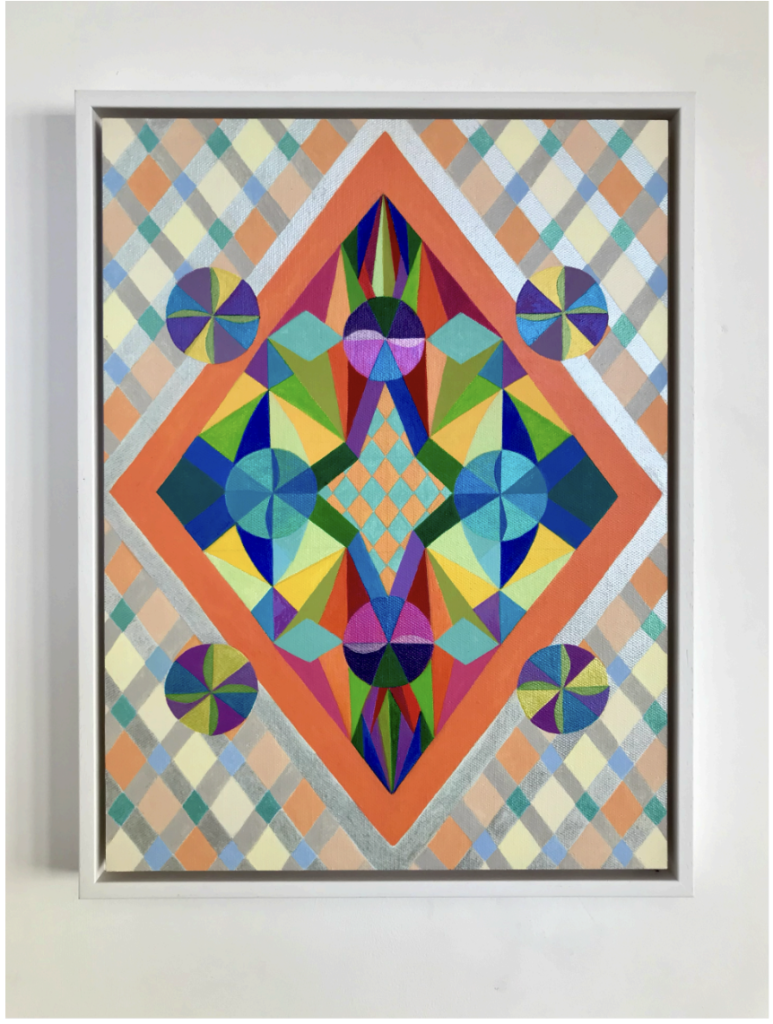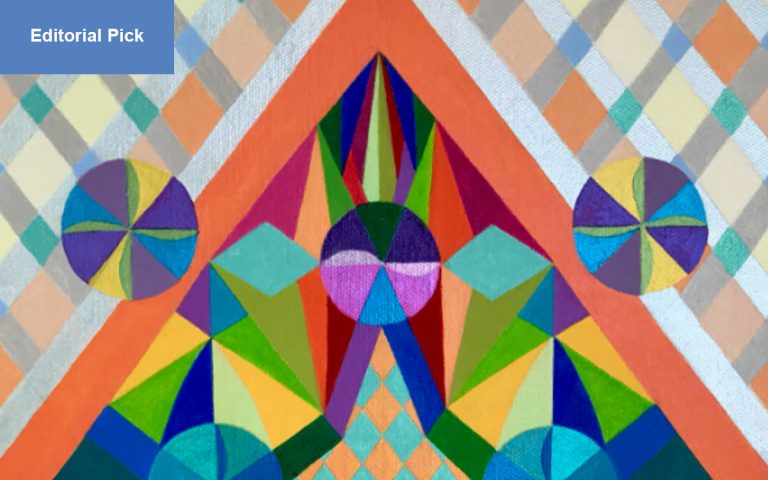Sue Nicholas’ work In-depth is a compact painting, sized A3, rendered in acrylic on canvas board and framed in wood. But despite its modest scale, the work holds surprising depth, both visually and conceptually. It resists surface interpretation, instead opening itself slowly, like layers of fog lifting in uneven light.

Nicholas calls the work an exploration of “non-digital pictorial space.” That phrase may sound technical at first, but it refers to something quite grounded—painting that’s built by hand, in physical space, without screen or pixel. The medium matters. Acrylic on canvas board allows her to build translucent and opaque layers that interact with the light in real time. These layers seem to float above and below each other. The surface doesn’t sit still. It moves. Or perhaps more accurately—it breathes.
A grid holds the composition in place. It’s not rigid or mathematical. It reads more like a rhythm, a soft net stretched across the surface. This grid does more than divide the space—it anchors it. Within this structure, elements drift in and out of focus. They don’t tell a story. They don’t represent objects. They’re part of a larger system, a kind of internal weather.
Nicholas doesn’t work from the outside in. She paints from the inside out. In-depth feels like a still from a longer internal process, like a frame from a dream. But there’s nothing chaotic or raw about it. The painting is deliberate, even quiet. The floating forms don’t crash into each other. They coexist, suspended in what the artist calls “an expressive internal dynamic.”
The substrate—the canvas board beneath the paint—plays a subtle but important role. Nicholas uses its reflective quality as part of the composition. Light doesn’t just bounce off the painting—it filters through the transparent paint and comes back changed, altered by the layers it passed through. The result is a gentle glow that seems to come from within.
Conceptually, In-depth is a continuation of Nicholas’ deeper inquiry: what does consciousness look like when it isn’t tied to a body, or a face, or a label? What happens when we strip away memory, language, and identity? What remains?
Nicholas approaches this question not with bold claims but with careful attention. Her palette doesn’t scream. Her shapes don’t assert dominance. Instead, everything unfolds in a slow, balanced rhythm. The viewer isn’t pulled into a narrative. They’re invited into a state. A space. A mode of perception that is closer to meditation than analysis.
There’s something generous about that. In a time when so much of art is built to shock, confront, or market, Nicholas’ work offers something different: reflection. Stillness. A moment to turn inward.
Her decision to stay grounded in analog painting—without leaning on digital tools or fast reproduction—feels like part of that philosophy. The painting exists as a physical object. Its space is real. Its process is slow. That pace matters. It mirrors the kind of attention required to tune into consciousness, to notice not what we think, but the fact that we are thinking at all.
In In-depth, Sue Nicholas doesn’t ask us to look at something. She asks us to look into something. That shift—from observation to introspection—is quiet, but it lingers. It makes the painting less about what we see, and more about how we see. And in that space, Nicholas has found a way to speak not through identity, but through awareness itself.

